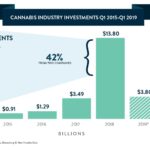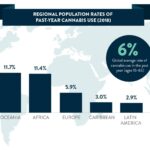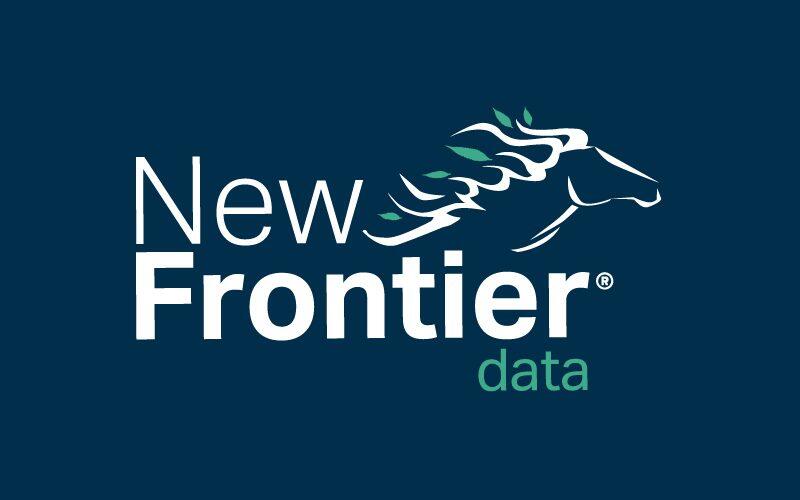Consumer Populations Do Not Always Correlate to Frequency of Cannabis Usage

Cannabis Industry Investments Q1 2015-Q1 2019
March 31, 2019
Global Cannabis Usage Rates by Region
April 7, 2019By J.J. McCoy, Senior Managing Editor, New Frontier Data
New Frontier Data estimates that there are 263 million cannabis consumers globally – 6% of the world’s adults – revealing in new detail the extent to which cannabis is used worldwide. Yet within and across the continents, the relative rates of consumption vary widely, reflecting broadly disparate influences of demand, social acceptance, and geopolitical patterns for cannabis use.
To wit: Among self-identified cannabis consumers (ages 15-65) in North America, the continent features a combined rate of 15.1% between consumers in Canada, the United States, and Mexico. Conversely, the combined rate in Asia (2.4%) stands at less than 1/6 of North America’s, as countries in Asia are overwhelmingly characterized by strict legal prohibitions and low social acceptance.
As described by Kacey Morrissey, New Frontier Data’s Associate Director of Industry Analytics, people in legal markets are much likelier to admit having consumed cannabis. It naturally follows that countries with greater social acceptance and product availability would have residents who use it more freely.. In Asia, recreational cannabis remains illegal across the entirety of the region, thus limiting consumption as consigned to the illicit market.
Across the top-24-largest markets within the seven primary geopolitical regions – Africa, Asia, the Caribbean, Europe, Latin America, North America, and Oceania – North America includes two of the largest (the United States with 37.82 million cannabis consumers, and Canada with 4.86M) in a region averaging past-year use among 15.1% of them overall.
Oceania primarily features Australia (2.33M) dominating its regional 11.7% past-year rate.
Africa includes 10 of the world’s two-dozen-largest markets with Nigeria (20.79M), Ethiopia (7.14M), Egypt (5.90M), the Congo (5.00M), Tanzania (3.61M), Kenya (3.28M), the Sudan (2.74M), Uganda (2.56M), Madagascar 2.14M) and Ghana (2.03M) while the continent averages an 11.4% past-year rate.
Europe includes France (6.32M), Italy (5.50M), Germany (4.70M), Spain (4.04M) and the United Kingdom (3.71M) while averaging a 5.9% past-year rate.
The Caribbean lacks any top-24-largest representative among its members, yet its 3.0% past-year rate ranks fifth among the seven regions.
Latin America has Brazil (4.24M) and a 2.9% past-year rate ranking second-least only to Asia. That seems likely to change somewhat, however, as many of the LatAm countries begin to establish medical programs and build operations to serve the international medical market. As detailed in New Frontier Data’s recent report, The Latin America Regional Cannabis Report: 2019 Industry Outlook, countries throughout the region are primarily launching highly regulated medical cannabis markets. Recognizing the significant potential opportunities presented by a regulated industry, cannabis businesses within and outside the region are aggressively pursuing import and export opportunities in Latin America to service a $9.8 billion USD market.
Asia includes five of the largest markets with China (27.12M), India (22.98M), Bangladesh (6.07M), the Russian Federation (5.85M), and Pakistan (5.49M), but as noted above the continent averages but a 2.4% past-year rate.
Knowing the size and regional reach of the current cannabis consumer market is key to understanding the surging expansion of cannabis legalization globally, along with the strong consumer participation in legal markets with low barriers to participation. This analysis also underscores that the few markets around the world where cannabis is currently legal represent but a sliver of the magnitude of the larger global community of cannabis consumers living in unregulated markets.




